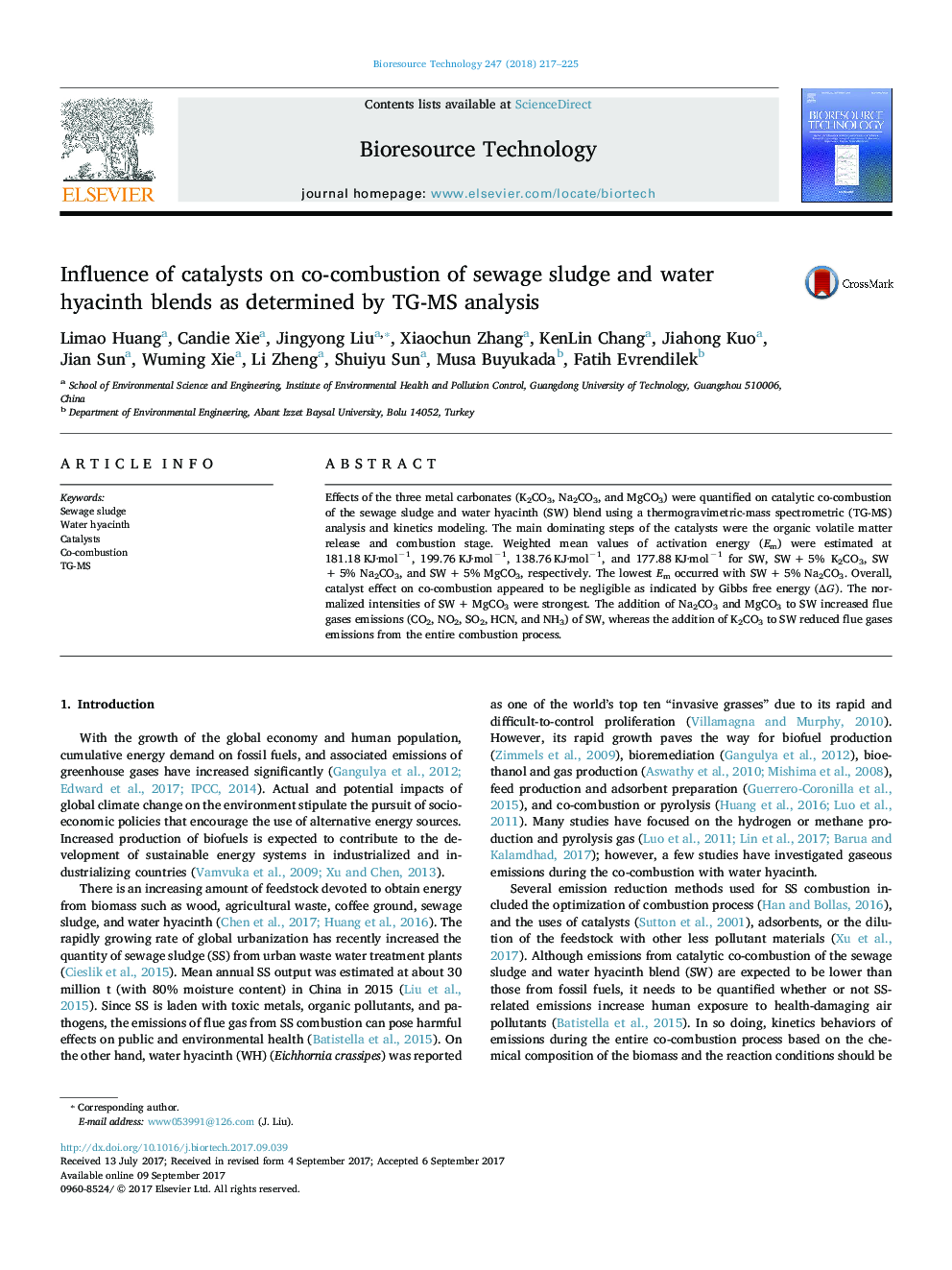| کد مقاله | کد نشریه | سال انتشار | مقاله انگلیسی | نسخه تمام متن |
|---|---|---|---|---|
| 4996642 | 1368272 | 2018 | 9 صفحه PDF | دانلود رایگان |

- Co-combustion of biomass with K2CO3, Na2CO3 and MgCO3 was studied by TG-MS.
- Kinetic and thermodynamic parameters (ÎH, ÎS, ÎG) were obtained through TGA curves.
- Main dominating steps were the organic volatile matter release and combustion stage.
- Na2CO3 was the most effective among the tested catalysts for the co-combustion.
- Adding K2CO3 catalyst to the biomass reduced the formation of flue gases.
Effects of the three metal carbonates (K2CO3, Na2CO3, and MgCO3) were quantified on catalytic co-combustion of the sewage sludge and water hyacinth (SW) blend using a thermogravimetric-mass spectrometric (TG-MS) analysis and kinetics modeling. The main dominating steps of the catalysts were the organic volatile matter release and combustion stage. Weighted mean values of activation energy (Em) were estimated at 181.18 KJ·molâ1, 199.76 KJ·molâ1, 138.76 KJ·molâ1, and 177.88 KJ·molâ1 for SW, SW + 5% K2CO3, SW + 5% Na2CO3, and SW + 5% MgCO3, respectively. The lowest Em occurred with SW + 5% Na2CO3. Overall, catalyst effect on co-combustion appeared to be negligible as indicated by Gibbs free energy (ÎG). The normalized intensities of SW + MgCO3 were strongest. The addition of Na2CO3 and MgCO3 to SW increased flue gases emissions (CO2, NO2, SO2, HCN, and NH3) of SW, whereas the addition of K2CO3 to SW reduced flue gases emissions from the entire combustion process.
Journal: Bioresource Technology - Volume 247, January 2018, Pages 217-225